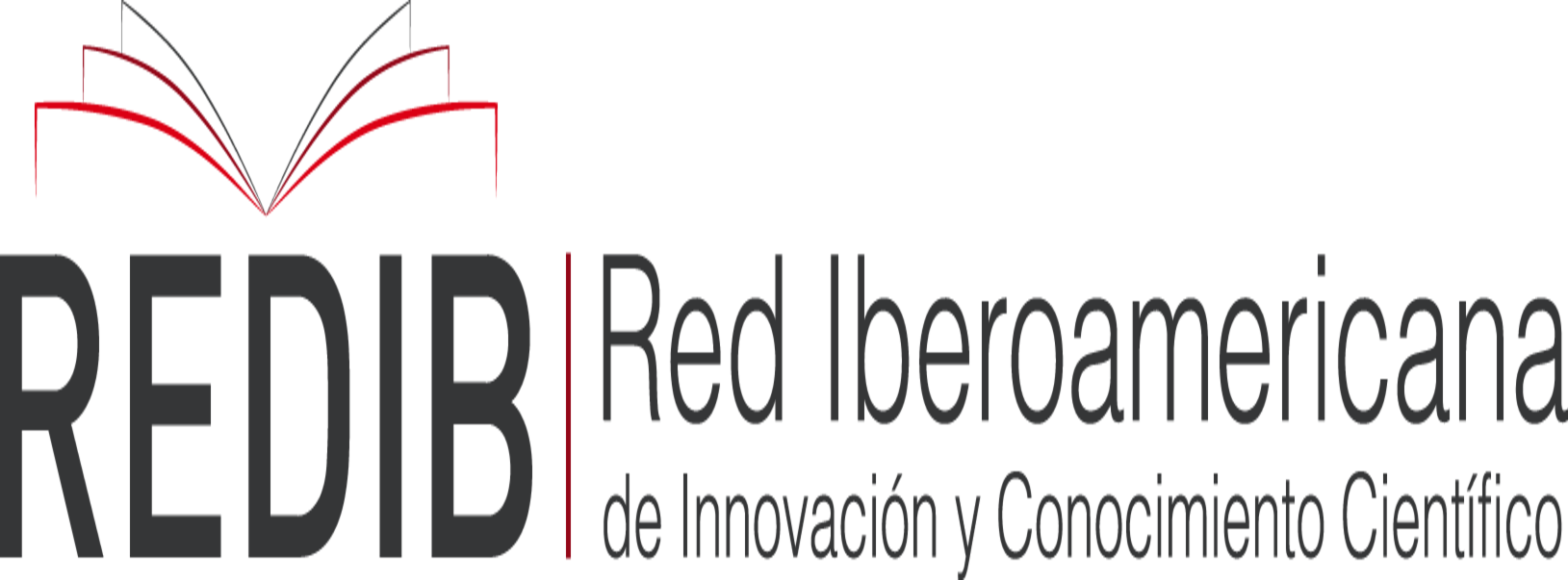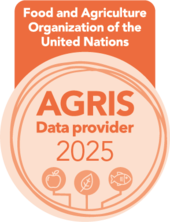Contaminantes orgánicos persistentes: Impactos y medidas de control
DOI:
https://doi.org/10.57188/manglar.2024.014Resumo
Los contaminantes orgánicos persistentes (COP) representan un problema ambiental significativo debido a su toxicidad, con una alta capacidad para persistir en el entorno, resistencia a los métodos de degradación convencionales, la capacidad de acumulación en organismos vivos y su magnificación en las cadenas tróficas o alimentarias. En este artículo de revisión, se examinan los impactos en la salud y en los componentes medio ambientales. También se abordan las estrategias y medidas de control, mitigación y/o minimización de los COP. Se identifica a las actividades agrícolas, industriales, la inadecuada disposición final de los residuos sólidos y la falta de tratamiento de las aguas residuales como las principales fuentes de emisión de COP. Además, se analizan tecnologías innovadoras y prometedoras, como la nanotecnología, biorremediación, rizorremediación, biocarbón, técnicas de cromatografía, ultrasonido, entre otras, para el tratamiento adecuado de los COP. La revisión destaca tanto las ventajas como las limitaciones de estas tecnologías, señalando áreas que aún requieren desarrollos para lograr tratamientos eficaces. También se mencionan alternativas más económicas y ecológicas, para contrarrestar los impactos de los COP.
Downloads
Referências
Ahmed, M. A., & Mohamed, A. A. (2022). Recent progress in semiconductor/graphene photocatalysts: Synthesis, photocatalytic applications, and challenges. RSC Advances, 13(1), 421-439. Scopus. https://doi.org/10.1039/d2ra07225d
Barrios-Rodríguez, R., Garde, C., Pérez-Carrascosa, F. M., Expósito, J., Peinado, F. M., Fernández Rodríguez, M., Requena, P., Salcedo-Bellido, I., & Arrebola, J. P. (2023). Associations of accumulated persistent organic pollutants in breast adipose tissue with the evolution of breast cancer after surgery. Science of the Total Environment, 897. Scopus. https://doi.org/10.1016/j.scitotenv.2023.165373
Björvang, R. D., Hassan, J., Stefopoulou, M., Gemzell-Danielsson, K., Pedrelli, M., Kiviranta, H., Rantakokko, P., Ruokojärvi, P., Lindh, C. H., Acharya, G., & Damdimopoulou, P. (2021). Persistent organic pollutants and the size of ovarian reserve in reproductive-aged women. Environment International, 155, 106589. https://doi.org/10.1016/j.envint.2021.106589
Borgå, K., McKinney, M. A., Routti, H., Fernie, K. J., Giebichenstein, J., Hallanger, I., & Muir, D. C. G. (2022). The influence of global climate change on accumulation and toxicity of persistent organic pollutants and chemicals of emerging concern in Arctic food webs. Environmental Science: Processes and Impacts, 24(10), 1544-1576. Scopus. https://doi.org/10.1039/d1em00469g
Buñay, J., Kossai, M., Damon-Soubeyrant, C., De Haze, A., Saru, J.-P., Trousson, A., de Joussineau, C., Bouchareb, E., Kocer, A., Vialat, M., Dallel, S., Degoul, F., Bost, F., Clavel, S., Penault-Llorca, F., Valli, M.-P., Guy, L., Matthews, J., Renaud, Y., … Baron, S. (2023). Persistent organic pollutants promote aggressiveness in prostate cancer. Oncogene, 42(38), Article 38. https://doi.org/10.1038/s41388-023-02788-2
Caba-Flores, M. D., Martínez-Valenzuela, C., Cárdenas-Tueme, M., & Camacho-Morales, A. (2023). Micro problems with macro consequences: Accumulation of persistent organic pollutants and microplastics in human breast milk and in human milk substitutes. Environmental Science and Pollution Research International, 30(42), 95139-95154. https://doi.org/10.1007/s11356-023-29182-5
Chakraborty, P., Chandra, S., Dimmen, M. V., Hurley, R., Mohanty, S., Bharat, G. K., Steindal, E. H., Olsen, M., & Nizzetto, L. (2022). Interlinkage Between Persistent Organic Pollutants and Plastic in the Waste Management System of India: An Overview. Bulletin of Environmental Contamination and Toxicology, 109(6), 927-936. https://doi.org/10.1007/s00128-022-03466-x
Checa-Fernández, A., Santos, A., Romero, A., & Domínguez, C. M. (2023). Remediation of real soils polluted with pesticides by activated persulfate and surfactant addition. Journal of Water Process Engineering, 53. Scopus. https://doi.org/10.1016/j.jwpe.2023.103829
Cherian, T., & Jamal, W. (2023). Use of green inspired nanomaterials for the biological remediation of pollutants. En Bioremediation Technologies: For Wastewater and Sustainable Circular Bioeconomy (pp. 275-292). Scopus. https://doi.org/10.1515/9783111016825-015
Combi, T., Montone, R. C., Corada-Fernández, C., Lara-Martín, P. A., Gusmao, J. B., & de Oliveira Santos, M. C. (2022). Persistent organic pollutants and contaminants of emerging concern in spinner dolphins (Stenella longirostris) from the Western Atlantic Ocean. Marine Pollution Bulletin, 174, 113263. https://doi.org/10.1016/j.marpolbul.2021.113263
Compuestos orgánicos persistentes y salud. (2022). Revista Española Endocrinología Pediátrica, 13 Suppl. https://doi.org/10.3266/RevEspEndocrinolPediatr.pre2022.Apr.732
Dat, T. D., Minh, D. T. C., An, H., Hai, N. D., Nam, N. T. H., Lam, N. H., & Hieu, N. H. (2024). Synthesis of selenium and fluorine co-doped graphitic carbon nitride for photodegradation of toxic organic pollutants and hydrogen peroxide photoproduction. Environmental Nanotechnology, Monitoring and Management, 21. Scopus. https://doi.org/10.1016/j.enmm.2024.100920
de Andrade, F. V., Augusti, R., & de Lima, G. M. (2021). Ultrasound for the remediation of contaminated waters with persistent organic pollutants: A short review. Ultrasonics Sonochemistry, 78, 105719. https://doi.org/10.1016/j.ultsonch.2021.105719
de Boer, J., van Dijk, R., Abalos, M., & Abad, E. (2023). Persistent organic pollutants in air from Asia, Africa, Latin America, and the Pacific. Chemosphere, 324, 138271. https://doi.org/10.1016/j.chemosphere.2023.138271
Ding, T., Zhu, M., Yan, L., Liu, Z., Zhou, P., Shi, G., & Yue, D. (2024). Resourceful recovery of WC@Co for organic pollutants treatment via Fenton-like reaction. Separation and Purification Technology, 341. Scopus. https://doi.org/10.1016/j.seppur.2024.126653
Ding, Y., Qin, S., Huang, H., Tang, X., Li, X., Zhang, Y., Chen, W., Nguyen, L.-P., & Qi, S. (2024). Selected pesticidal POPs and metabolites in the soil of five Vietnamese cities: Sources, fate, and health risk implications. Environmental Pollution, 342. Scopus. https://doi.org/10.1016/j.envpol.2023.123043
Drevenkar, V., & Mendaš, G. (2023). Environmental Monitoring and Analysis of Persistent Organic Pollutants. Toxics, 11(6), 535. https://doi.org/10.3390/toxics11060535
Esen, F., Cordova Del Aguila, D. A., & Sari, M. F. (2023). Air and soil concentrations of persistent organic pollutants in Bursa (Türkiye) and Yurimaguas (Peru): Air-soil exchange and gas-phase flux. Air Quality, Atmosphere and Health, 16(11), 2239-2255. Scopus. https://doi.org/10.1007/s11869-023-01400-6
Fei, L., Bilal, M., Qamar, S. A., Imran, H. M., Riasat, A., Jahangeer, M., Ghafoor, M., Ali, N., & Iqbal, H. M. N. (2022). Nano-remediation technologies for the sustainable mitigation of persistent organic pollutants. Environmental Research, 211, 113060. https://doi.org/10.1016/j.envres.2022.113060
Ferreira, A. L. L., Freitas-Costa, N., da Silva Rosa Freire, S., Figueiredo, A. C. C., Padilha, M., Alves-Santos, N. H., & Kac, G. (2023). Association of pre-pregnancy maternal overweight/obesity and dietary intake during pregnancy with the concentrations of persistent organic pollutants in the human milk of women from Rio de Janeiro, Brazil. Environmental Science and Pollution Research International, 30(15), 44999-45014. https://doi.org/10.1007/s11356-023-25308-x
Fiedler, H., Ábalos, M., Parera, J., Abad, E., Lohmann, N., Neugebauer, F., Rottler, H., & Horstmann, M. (2023). Dioxin-like POPs in national samples from global monitoring plan projects (2017–2019). Chemosphere, 325. Scopus. https://doi.org/10.1016/j.chemosphere.2023.138386
Flores-Ramírez, R., Mendoza-Rivera, S. P., García-Grajales, J., Buenrostro-Silva, A., Sanjuan-Meza, E. U., Berumen-Rodríguez, A. A., & Espinosa-Reyes, G. (2024). Persistent organic pollutants in the olive ridley turtle (Lepidochelys olivacea) during the nesting stage in the “La Escobilla” Sanctuary, Oaxaca, Mexico. Environmental Science and Pollution Research, 31(7), 10911-10919. Scopus. https://doi.org/10.1007/s11356-024-31833-0
Folarin, B. T., Poma, G., Yin, S., Altamirano, J. C., Oluseyi, T., Badru, G., & Covaci, A. (2024). Assessment of legacy and alternative halogenated organic pollutants in outdoor dust and soil from e-waste sites in Nigeria: Concentrations, patterns, and implications for human exposure. Environmental Pollution, 342. Scopus. https://doi.org/10.1016/j.envpol.2023.123032
Giosuè, C., D’Agostino, F., Maniaci, G., Avellone, G., Sciortino, M., De Caro, V., Bonanno, A., Ponte, M., Alabiso, M., & Di Grigoli, A. (2022). Persistent Organic Pollutants and Fatty Acid Profile in a Typical Cheese from Extensive Farms: First Assessment of Human Exposure by Dietary Intake. Animals: An Open Access Journal from MDPI, 12(24), 3476. https://doi.org/10.3390/ani12243476
Girones, L., Oliva, A. L., Negrin, V. L., Marcovecchio, J. E., & Arias, A. H. (2021). Persistent organic pollutants (POPs) in coastal wetlands: A review of their occurrences, toxic effects, and biogeochemical cycling. Marine Pollution Bulletin, 172, 112864. https://doi.org/10.1016/j.marpolbul.2021.112864
Guillotin, S., & Delcourt, N. (2022). Studying the Impact of Persistent Organic Pollutants Exposure on Human Health by Proteomic Analysis: A Systematic Review. International Journal of Molecular Sciences, 23(22), 14271. https://doi.org/10.3390/ijms232214271
Haider, F. U., Wang, X., Zulfiqar, U., Farooq, M., Hussain, S., Mehmood, T., Naveed, M., Li, Y., Liqun, C., Saeed, Q., Ahmad, I., & Mustafa, A. (2022). Biochar application for remediation of organic toxic pollutants in contaminated soils; An update. Ecotoxicology and Environmental Safety, 248. Scopus. https://doi.org/10.1016/j.ecoenv.2022.114322
Hakkarainen, K., Rantakokko, P., Koponen, J., Ruokojärvi, P., Korkalainen, M., Salomaa, V., Jula, A., Männistö, S., Perola, M., Lundqvist, A., Männistö, V., & Åberg, F. (2023). Persistent organic pollutants associate with liver disease in a Finnish general population sample. Liver International: Official Journal of the International Association for the Study of the Liver, 43(10), 2177-2185. https://doi.org/10.1111/liv.15645
Hamdan, H. Z., & Salam, D. A. (2023). Sediment microbial fuel cells for bioremediation of pollutants and power generation: A review. Environmental Chemistry Letters, 21(5), 2761-2787. Scopus. https://doi.org/10.1007/s10311-023-01625-y
Hoyeck, M. P., Matteo, G., MacFarlane, E. M., Perera, I., & Bruin, J. E. (2022). Persistent organic pollutants and β-cell toxicity: A comprehensive review. American Journal of Physiology. Endocrinology and Metabolism, 322(5), E383-E413. https://doi.org/10.1152/ajpendo.00358.2021
Ighalo, J. O., Yap, P.-S., Iwuozor, K. O., Aniagor, C. O., Liu, T., Dulta, K., Iwuchukwu, F. U., & Rangabhashiyam, S. (2022). Adsorption of persistent organic pollutants (POPs) from the aqueous environment by nano-adsorbents: A review. Environmental Research, 212. Scopus. https://doi.org/10.1016/j.envres.2022.113123
Iribarne-Durán, L. M., Castillero-Rosales, I., Peinado, F. M., Artacho-Cordón, F., Molina-Molina, J. M., Medianero, E., Nicolás-Delgado, S. I., Sánchez-Pinzón, L., Núñez-Samudio, V., Vela-Soria, F., Olea, N., & Alvarado-González, N. E. (2024). Placental concentrations of xenoestrogenic organochlorine pesticides and polychlorinated biphenyls and assessment of their xenoestrogenicity in the PA-MAMI mother-child cohort. Environmental Research, 241, 117622. https://doi.org/10.1016/j.envres.2023.117622
Khumalo, S. M., Bakare, B. F., & Rathilal, S. (2022). The Occurrence and Bioremediation of Emerging Polyfluorinated Compounds in Water Bodies: A Mini Review. Applied Sciences (Switzerland), 12(23). Scopus. https://doi.org/10.3390/app122312196
Krätschmer, K., Malisch, R., & Vetter, W. (2021). Chlorinated Paraffin Levels in Relation to Other Persistent Organic Pollutants Found in Pooled Human Milk Samples from Primiparous Mothers in 53 Countries. Environmental Health Perspectives, 129(8), 87004. https://doi.org/10.1289/EHP7696
Kumar, M., Saggu, S. K., Pratibha, P., Singh, S. K., & Kumar, S. (2023). Exploring the role of microbes for the management of persistent organic pollutants. Journal of Environmental Management, 344. Scopus. https://doi.org/10.1016/j.jenvman.2023.118492
Li, S.-T., Chang, L., Wang, K., Xie, J., Chen, W., Huang, G.-B., & Yin, H. (2023). Z-scheme MnO2/Mn3O4 heterojunctions with efficient peroxymonosulfate activation for organic pollutant removal. Chemosphere, 341. Scopus. https://doi.org/10.1016/j.chemosphere.2023.140117
Ling, J., Yan, Z., Liu, X., Men, S., Wei, C., Wang, Z., & Zheng, X. (2024). Health risk assessment and development of human health ambient water quality criteria for PCBs in Taihu Basin, China. Science of the Total Environment, 920. Scopus. https://doi.org/10.1016/j.scitotenv.2024.170669
Lu, L., Chen, Y., Zou, S., Wang, Z., & Fan, L. (2024). The sources, diffusion, and health risks of polycyclic aromatic hydrocarbons in water and sediment of a typical underground river in South China. Environmental Earth Sciences, 83(3). Scopus. https://doi.org/10.1007/s12665-023-11395-z
Luo, Y., Geng, N.-B., Chen, S.-S., Cheng, L., Zhang, H.-J., & Chen, J.-P. (2024). Metabolomic interference induced by short-chain chlorinated paraffins in human normal hepatic cells. Se pu = Chinese journal of chromatography, 42(2), 176-184. Scopus. https://doi.org/10.3724/SP.J.1123.2023.10037
Machado Torres, J. P., & Krykhtine, F. L. P. (2023). Persistent Organic Pollutants (POPs) in fish biota of Guanabara Bay at Rio de Janeiro—Brazil. 407. Scopus. https://doi.org/10.1051/e3sconf/202340704001
Massone, C. G., Dos Santos, A. A., Ferreira, P. G., & Carreira, R. da S. (2023). Persistent Organic Pollutants (POPs) in Sardine (Sardinella brasiliensis): Biomonitoring and Potential Human Health Effects. International Journal of Environmental Research and Public Health, 20(3), 2036. https://doi.org/10.3390/ijerph20032036
Matta, K., Lefebvre, T., Vigneau, E., Cariou, V., Marchand, P., Guitton, Y., Royer, A.-L., Ploteau, S., Le Bizec, B., Antignac, J.-P., & Cano-Sancho, G. (2022). Associations between persistent organic pollutants and endometriosis: A multiblock approach integrating metabolic and cytokine profiling. Environment International, 158, 106926. https://doi.org/10.1016/j.envint.2021.106926
Monteiro, F. C., Carreira, R. D. S., Gramlich, K. C., de Pinho, J. V., Massone, C. G., Vianna, M., & Hauser-Davis, R. A. (2023). A systematic review on polycyclic aromatic hydrocarbon contamination in elasmobranchs and associated human health risks. Marine Pollution Bulletin, 195. Scopus. https://doi.org/10.1016/j.marpolbul.2023.115535
Muñoz-Arnanz, J., Cortés-Avizanda, A., Donázar-Aramendía, I., Arrondo, E., Ceballos, O., Colomer-Vidal, P., Jiménez, B., & Donázar, J. A. (2024). Levels of persistent organic pollutants (POPs) and the role of anthropic subsidies in the diet of avian scavengers tracked by stable isotopes. Environmental Pollution, 343, 123188. https://doi.org/10.1016/j.envpol.2023.123188
Negrete-Bolagay, D., Zamora-Ledezma, C., Chuya-Sumba, C., De Sousa, F. B., Whitehead, D., Alexis, F., & Guerrero, V. H. (2021). Persistent organic pollutants: The trade-off between potential risks and sustainable remediation methods. Journal of Environmental Management, 300, 113737. https://doi.org/10.1016/j.jenvman.2021.113737
Nguyen, T.-B., Sherpa, K., Bui, X.-T., Nguyen, V.-T., Vo, T.-D.-H., Ho, H.-T.-T., Chen, C.-W., & Dong, C.-D. (2023). Biochar for soil remediation: A comprehensive review of current research on pollutant removal. Environmental Pollution, 337. Scopus. https://doi.org/10.1016/j.envpol.2023.122571
Noren, D. P., Johnson, S., Boyd, D., Ylitalo, G. M., Lundin, J., McCormley, M., & Jensen, E. D. (2024). La dinámica de la transferencia de contaminantes orgánicos persistentes (COP) de las hembras del delfín mular (Tursiops truncatus) a sus terneros durante la lactancia. Science of The Total Environment, 907, 167888. https://doi.org/10.1016/j.scitotenv.2023.167888
Olisah, C., Rubidge, G., Human, L. R. D., & Adams, J. B. (2024). Investigation of alkyl, aryl, and chlorinated OPFRs in sediments from estuarine systems: Seasonal variation, spatial distribution and ecological risks assessment. Environmental Research, 250. Scopus. https://doi.org/10.1016/j.envres.2024.118465
Paz, R., Viltres, H., Gupta, N. K., Phung, V., Srinivasan, S., Rajabzadeh, A. R., & Leyva, C. (2023). Covalent organic frameworks as highly versatile materials for the removal and electrochemical sensing of organic pollutants. Chemosphere, 342. Scopus. https://doi.org/10.1016/j.chemosphere.2023.140145
Phor, L., Ankush, Suman, Malik, J., Sharma, S., Sonia, Chaudhary, V., Rani, G. M., Kumar, A., Kumar, P., & Chahal, S. (2023). Magnetically separable NiZn-ferrite/CeO2 nanorods/CNT ternary composites for photocatalytic removal of organic pollutants. Journal of Molecular Liquids, 390. Scopus. https://doi.org/10.1016/j.molliq.2023.123064
Popli, S., Badgujar, P. C., Agarwal, T., Bhushan, B., & Mishra, V. (2022). Persistent organic pollutants in foods, their interplay with gut microbiota and resultant toxicity. Science of the Total Environment, 832. Scopus. https://doi.org/10.1016/j.scitotenv.2022.155084
Prekrasna, I., Pavlovska, M., Oleinik, I., Dykyi, E., Slobodnik, J., Alygizakis, N., Solomenko, L., & Stoica, E. (2022). Bacterial communities of the Black Sea exhibit activity against persistent organic pollutants in the water column and sediments. Ecotoxicology and Environmental Safety, 234. Scopus. https://doi.org/10.1016/j.ecoenv.2022.113367
Qadeer, A., Mubeen, S., Liu, M., Bekele, T. G., Ohoro, C. R., Adeniji, A. O., Alraih, A. M., Ajmal, Z., Alshammari, A. S., Al-Hadeethi, Y., Archundia, D., Yuan, S., Jiang, X., Wang, S., Li, X., & Sauvé, S. (2024). Global environmental and toxicological impacts of polybrominated diphenyl ethers versus organophosphate esters: A comparative analysis and regrettable substitution dilemma. Journal of Hazardous Materials, 466. Scopus. https://doi.org/10.1016/j.jhazmat.2024.133543
Qi, X., Zhu, M., Yuan, Y., Dang, Z., & Yin, H. (2023). Bioremediation of PBDEs and heavy metals co-contaminated soil in e-waste dismantling sites by Pseudomonas plecoglossicida assisted with biochar. Journal of Hazardous Materials, 460. Scopus. https://doi.org/10.1016/j.jhazmat.2023.132408
Rasmussen, S. L., Pertoldi, C., Roslev, P., Vorkamp, K., & Nielsen, J. L. (2024). A Review of the Occurrence of Metals and Xenobiotics in European Hedgehogs (Erinaceus europaeus). Animals, 14(2), Article 2. https://doi.org/10.3390/ani14020232
Rebryk, A., & Haglund, P. (2022). Comprehensive non-target screening of biomagnifying organic contaminants in the Baltic Sea food web. Science of the Total Environment, 851. Scopus. https://doi.org/10.1016/j.scitotenv.2022.158280
Rezania, S., Talaiekhozani, A., Oryani, B., Cho, J., Barghi, M., Rupani, P. F., & Kamali, M. (2022). Occurrence of persistent organic pollutants (POPs) in the atmosphere of South Korea: A review. Environmental Pollution, 307. Scopus. https://doi.org/10.1016/j.envpol.2022.119586
Rivera-Pérez, A., Romero-González, R., & Garrido Frenich, A. (2022). Persistent organic pollutants (PCBs and PCDD/Fs), PAHs, and plasticizers in spices, herbs, and tea—A review of chromatographic methods from the last decade (2010-2020). Critical Reviews in Food Science and Nutrition, 62(19), 5224-5244. https://doi.org/10.1080/10408398.2021.1883546
Roark, A. M. C. (2020). Endocrine Disruptors and Marine Systems. En Encyclopedia of the World’s Biomes: Volumes 1-5 (Vols. 1-5, pp. V5-188). Scopus. https://doi.org/10.1016/B978-0-12-409548-9.12426-1
Roe, R. A. L., & MacFarlane, G. R. (2022). The potential of saltmarsh halophytes for phytoremediation of metals and persistent organic pollutants: An Australian perspective. Marine Pollution Bulletin, 180, 113811. https://doi.org/10.1016/j.marpolbul.2022.113811
Rokni, L., Rezaei, M., Rafieizonooz, M., Khankhajeh, E., Mohammadi, A. A., & Rezania, S. (2023). Effect of Persistent Organic Pollutants on Human Health in South Korea: A Review of the Reported Diseases. Sustainability (Switzerland), 15(14). Scopus. https://doi.org/10.3390/su151410851
Sardenne, F., Le Loc’h, F., Bodin, N., Mve-Beh, J.-H., Munaron, J.-M., Mbega, J.-D., Nzigou, A. R., Sadio, O., Budzinski, H., & Leboulanger, C. (2024). Persistent organic pollutants and trace metals in selected marine organisms from the Akanda National Park, Gabon (Central Africa). Marine Pollution Bulletin, 199, 116009. https://doi.org/10.1016/j.marpolbul.2023.116009
Shih, C.-H., Kim, J., Yang, S.-H., Soker, O., Strathmann, T. J., & Chu, K.-H. (2024). Remediation of PFAS-impacted soils using magnetic activated carbon (MAC) and hydrothermal alkaline treatment (HALT). Science of the Total Environment, 912. Scopus. https://doi.org/10.1016/j.scitotenv.2023.168931
Simukoko, C. K., Mwakalapa, E. B., Muzandu, K., Mutoloki, S., Evensen, Ø., Ræder, E. M., Müller, M. B., Polder, A., & Lyche, J. L. (2023). Persistent organic pollutants (POPs) and per- and polyfluoroalkyl substances (PFASs) in liver from wild and farmed tilapia (Oreochromis niloticus) from Lake Kariba, Zambia: Levels and geographic trends and considerations in relation to environmental quality standards (EQSs). Environmental Research, 232. Scopus. https://doi.org/10.1016/j.envres.2023.116226
Singh, R., Samuel, M. S., Ravikumar, M., Ethiraj, S., & Kumar, M. (2024). Graphene materials in pollution trace detection and environmental improvement. Environmental Research, 243, 117830. https://doi.org/10.1016/j.envres.2023.117830
Sobek, A., Abel, S., Sanei, H., Bonaglia, S., Li, Z., Horlitz, G., Rudra, A., Oguri, K., & Glud, R. N. (2023). Organic matter degradation causes enrichment of organic pollutants in hadal sediments. Nature Communications, 14(1). Scopus. https://doi.org/10.1038/s41467-023-37718-z
Štrbac, S., Kašanin-Grubin, M., Stojić, N., Pezo, L., Lončar, B., Tognetti, R., & Pucarević, M. (2024). Persistent organic pollutants in soil samples from mountain beech forests across Europe. Plant and Soil, 495(1-2), 313-339. Scopus. https://doi.org/10.1007/s11104-023-06329-4
Syed, S., Qasim, S., Ejaz, M., Sammar, Khan, N., Ali, H., Zaker, H., Hatzidaki, E., Mamoulakis, C., Tsatsakis, A., Shah, S. T. A., & Amir, S. (2023). Effects of Dichlorodiphenyltrichloroethane on the Female Reproductive Tract Leading to Infertility and Cancer: Systematic Search and Review. Toxics, 11(9). Scopus. https://doi.org/10.3390/toxics11090725
Tian, M., Liu, Y., Zhang, S., Yu, C., Ostrikov, K. (Ken), & Zhang, Z. (2024). Overcoming the permeability-selectivity challenge in water purification using two-dimensional cobalt-functionalized vermiculite membrane. Nature Communications, 15(1), 391. https://doi.org/10.1038/s41467-024-44699-0
Tripathi, S., Purchase, D., Chandra, R., Nadda, A. K., & Bhargava, P. C. (2022). Mitigation of hazards and risks of emerging pollutants through innovative treatment techniques of post methanated distillery effluent—A review. Chemosphere, 300. Scopus. https://doi.org/10.1016/j.chemosphere.2022.134586
van der Schyff, V., Kwet Yive, N. S. C., Polder, A., Cole, N. C., Tatayah, V., Kylin, H., & Bouwman, H. (2021). Persistent organic pollutants in sea bird eggs from the Indian Ocean’s Mascarene Basin. The Science of the Total Environment, 771, 145348. https://doi.org/10.1016/j.scitotenv.2021.145348
Wacławek, S., Krawczyk, K., Silvestri, D., Padil, V. V. T., Řezanka, M., Černík, M., & Jaroniec, M. (2022). Cyclodextrin-based strategies for removal of persistent organic pollutants. Advances in Colloid and Interface Science, 310. Scopus. https://doi.org/10.1016/j.cis.2022.102807
Wagner, M., Andrew Lin, K.-Y., Oh, W.-D., & Lisak, G. (2021). Metal-organic frameworks for pesticidal persistent organic pollutants detection and adsorption—A mini review. Journal of Hazardous Materials, 413, 125325. https://doi.org/10.1016/j.jhazmat.2021.125325
Warren-Vega, W. M., Campos-Rodríguez, A., Zárate-Guzmán, A. I., & Romero-Cano, L. A. (2023). A Current Review of Water Pollutants in American Continent: Trends and Perspectives in Detection, Health Risks, and Treatment Technologies. International Journal of Environmental Research and Public Health, 20(5), 4499. https://doi.org/10.3390/ijerph20054499
Xia, Y., & Lin, X. (2022). Efficient biodegradation of straw and persistent organic pollutants by a novel strategy using recombinant Trichoderma reesei. Bioresources and Bioprocessing, 9(1). Scopus. https://doi.org/10.1186/s40643-022-00581-9
Xiang, L., Harindintwali, J. D., Wang, F., Redmile-Gordon, M., Chang, S. X., Fu, Y., He, C., Muhoza, B., Brahushi, F., Bolan, N., Jiang, X., Ok, Y. S., Rinklebe, J., Schaeffer, A., Zhu, Y.-G., Tiedje, J. M., & Xing, B. (2022). Integrating Biochar, Bacteria, and Plants for Sustainable Remediation of Soils Contaminated with Organic Pollutants. Environmental Science and Technology, 56(23), 16546-16566. Scopus. https://doi.org/10.1021/acs.est.2c02976
Zhang, Z., Zhou, Z., Liu, X., Zhang, H., Xu, H., Lin, C., He, M., & Ouyang, W. (2023). Mechanochemical remediation of lindane-contaminated soils assisted by CaO: Performance, mechanism and overall assessment. Journal of Hazardous Materials, 458. Scopus. https://doi.org/10.1016/j.jhazmat.2023.131985
Zhao, R., Hu, F., Zhang, Y., Dong, B., Li, Z., Qu, W., Liu, C., Song, Z., Lu, P., Ji, D., Liu, W., & Yu, D. (2024). Carbon quantum dots/UiO-66@polysulfone porous microspheres fabricated via pickering emulsion template for pollutant removal. Separation and Purification Technology, 337. Scopus. https://doi.org/10.1016/j.seppur.2024.126367
Zhao, X., Li, J., Zhang, D., Jiang, L., Wang, Y., Hu, B., Wang, S., Dai, Y., Luo, C., & Zhang, G. (2023). Unveiling the novel role of ryegrass rhizospheric metabolites in benzo[a]pyrene biodegradation. Environment International, 180. Scopus. https://doi.org/10.1016/j.envint.2023.108215
Downloads
Publicado
Edição
Secção
Licença
Direitos de Autor (c) 2024 Cesar R. Castro López, Luis M. Castillo Rodríguez

Este trabalho encontra-se publicado com a Licença Internacional Creative Commons Atribuição 4.0.

Manglar is an open access journal distributed under the terms and conditions of Creative Commons Attribution 4.0 International license









